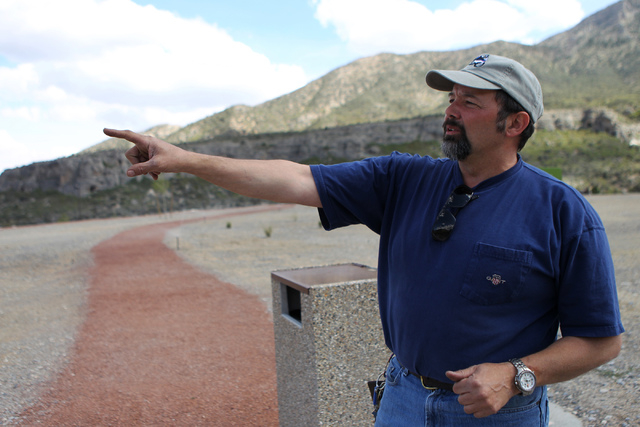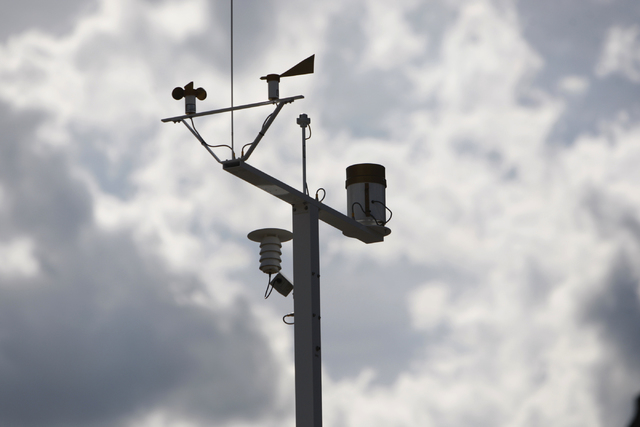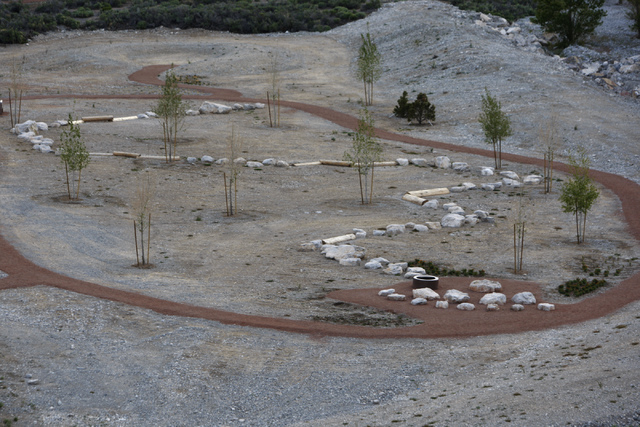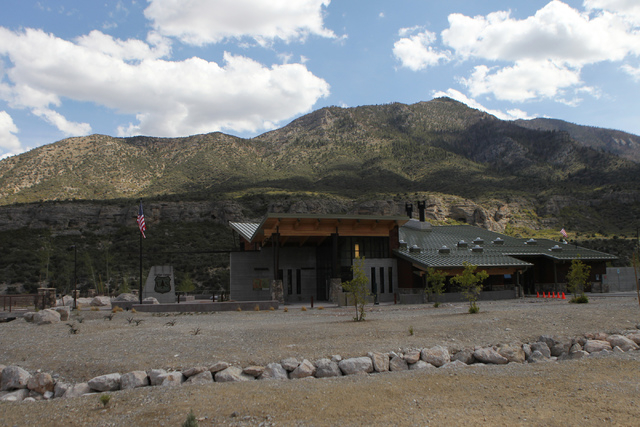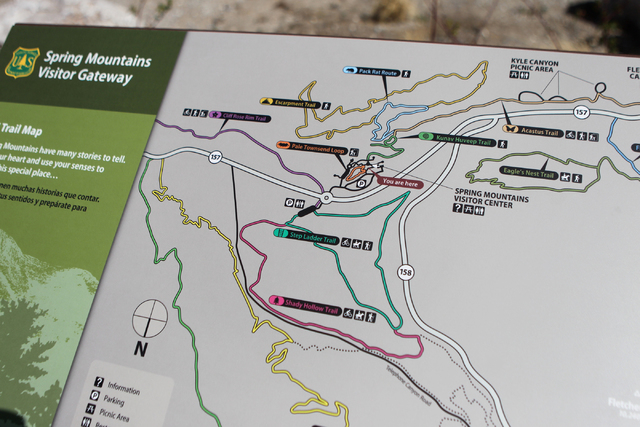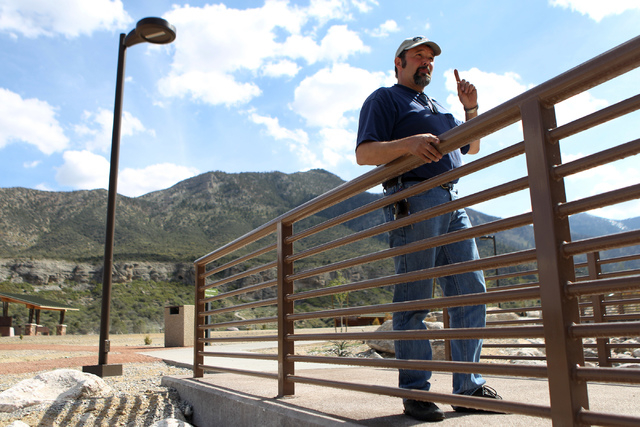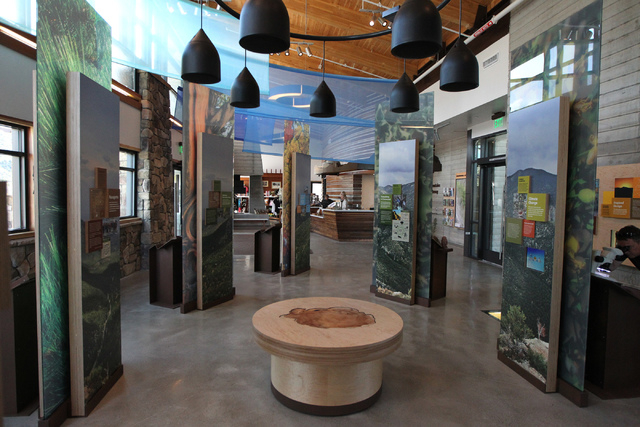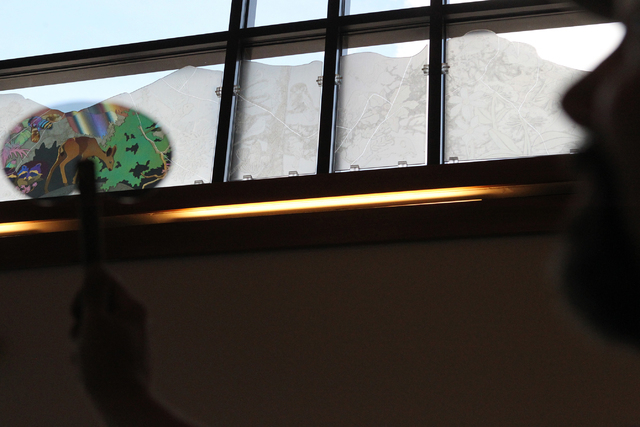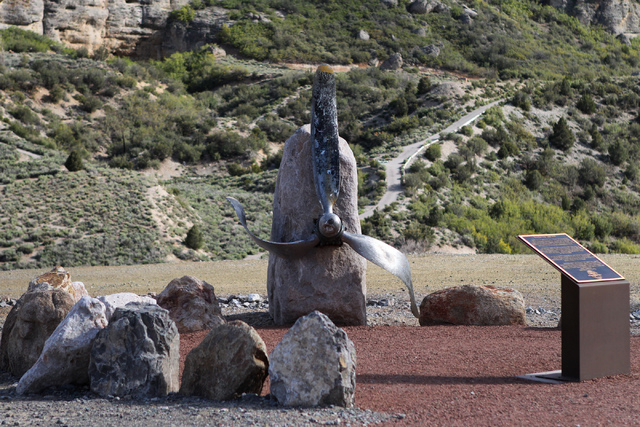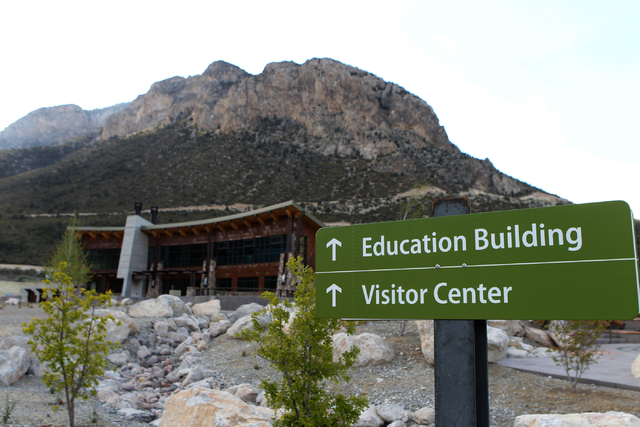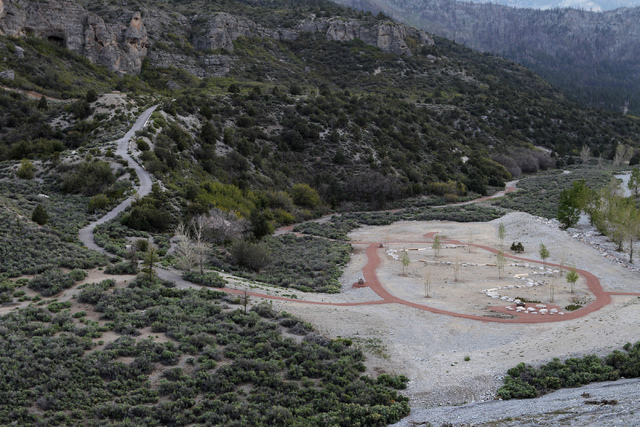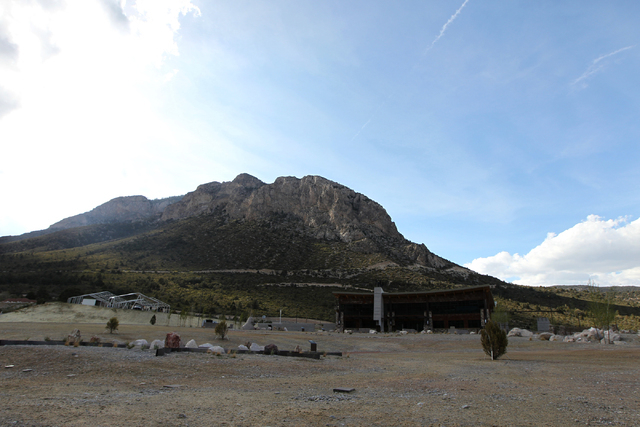$50M Visitor Gateway on Mount Charleston opens Saturday — PHOTOS
With more than 1 million visitors annually, Spring Mountains National Recreation Area already ranks as one of the most popular destinations for valley residents looking to cool down and blow off some steam.
Now it has a new decompression chamber.
That’s how U.S. Forest Service civil engineer John Harris likes to describe the recently completed Spring Mountains Visitor Gateway, a 128-acre complex along the Kyle Canyon Wash that officially opens to the public Saturday morning.
As project manager, Harris spent the past four years guiding the design and construction of the gateway on state Route 157, about 35 miles northwest of the Las Vegas Strip. He said the finished product is meant to help visitors “decompress from the urban environment” as they move from their cars into a quiet hilltop park landscaped with native plants and seeds and dotted with trails and a few structures built to both reflect and blend in with the surroundings.
AS GREEN AS IT CAN BE
The main attraction is the 4,500-square-foot visitor center. There, sightseers can stand in a circle of towering photos that recreate the 360-degree view from the top of Cathedral Rock and stroll through interactive displays dedicated to the seven distinct plant communities found at different elevations in the 316,000-acre recreation area.
Visitors also can see signs of the smart building techniques that make the structure as energy-efficient as possible.
Instead of a traditional heater or air conditioner, the building has a system of heat-exchanging coils that work much as the coils in a refrigerator. Only in this case, roughly 10,000 feet of coils are buried in the ground next to the building and extend inside.
A computer automatically opens and closes windows near the ceiling to further regulate internal temperature and air quality. The building is so sophisticated it needs its own weather station, Harris said.
In another ecofriendly touch, the shelves in the gift shop and paneling on the information desk are made from old-growth redwood salvaged from old campground benches and picnic tables.
A few steps from the visitor center, a twisted propeller mounted to a rock marks the entrance to a new national memorial dedicated to the Silent Heroes of the Cold War. Harris said the memorial marks the culmination of a 16-year campaign led by Las Vegas resident Steve Ririe, who helped lift the shroud of secrecy from the 1955 airplane crash on Mount Charleston that killed 14 men flying to Area 51 during development of the U-2 spy plane.
At the property’s geographic center is the Seven Stones Plaza, a tribute to the seven Southern Paiute Indian tribes known collectively as the Nuwuvi. As the name suggests, the plaza features seven boulders — one for each of the tribes — arrayed around a central stone marked with a hand print representing Ocean Woman, the Nuwuvi’s creator.
RECLAIMING A FAILED ICE RINK
The new visitor gateway also doubles as a monument to the Southern Nevada Public Lands Management Act, a 1998 law that directs profits from federal land auctions in the Las Vegas Valley to schools, parks, water infrastructure, Lake Tahoe preservation and recreation projects in the state.
The act has generated more than $3 billion so far from the sale of more than 15,000 acres. That money paid for the gateway and a host of other recent projects in the Spring Mountains, including the first major campground renovations since the 1970s.
“We did $100 million worth of work on the mountain, and this is the key to it all,” Harris said of the gateway.
The project cost about $45 million, including $16 million to buy the property in 2004.
Harris said the gateway was built on the site of a private development that included a 9-hole golf course, two miniature golf courses and an ice rink before it faltered in the late 1990s.
The Forest Service wound up with a few abandoned buildings and a flat expanse of land covered in pavement, concrete, nonnative plants and other debris at odds with the surrounding landscape.
“It was all basically a Wal-Mart (parking lot). It was really a very obtrusive thing,” Harris said. “There’s a large story of reclamation here.”
All that remains of the old development are the paved golf cart paths on the hillside across Kyle Canyon Wash. They have been folded into a new, 40-mile network of hiking trails that extend out from the gateway.
Harris said the trails offer something for every skill level, from wheelchair-accessible loops to a steep, rugged climb to the ridge line across the canyon. There is even a short stretch of trail where kids are encouraged to make their way by hopping across rocks and logs.
Other amenities include two large group picnic areas, a rentable meeting facility with its own patio and built-in gas grill, and two amphitheaters — one with room for about 40 people, the other 300.
The property has been planted with Aspen trees and other native plants and seeds and decorated with three bristlecone pine stumps, each ranging from 1,000- to 2,000-years-old and salvaged from some of the highest reaches of the Spring Mountains.
Harris said 1 percent of the construction budget was dedicated to what he called “structural art,” including unusually shaped stone benches placed around the property. Inside the visitor center, there are panes of what look like frosted glass cut in the shape of mountain ranges and lightly etched with the faint outlines of plants and animals. When viewed through a polarizing filter, the glass panes by artist Austine Wood Comarow explode with colorful nature scenes.
The Forest Service quietly opened the visitor center in late April to help work out any kinks with the new facility. About 3,500 people have come through so far, but much larger crowds are expected once the gateway fully and officially opens to the public from 8 a.m. to 5 p.m. daily starting Saturday.
The gateway replaces the old visitor center for Spring Mountains National Recreation Area, which Harris described as undersized and poorly positioned higher up on Route 157. By the time visitors reached the old facility, they had already driven past the connector road to Lee Canyon and “missed half of the recreation” the mountain has to offer, he said.
Contact Henry Brean at hbrean@reviewjournal.com or 702-383-0350. Find him on Twitter: @RefriedBrean




